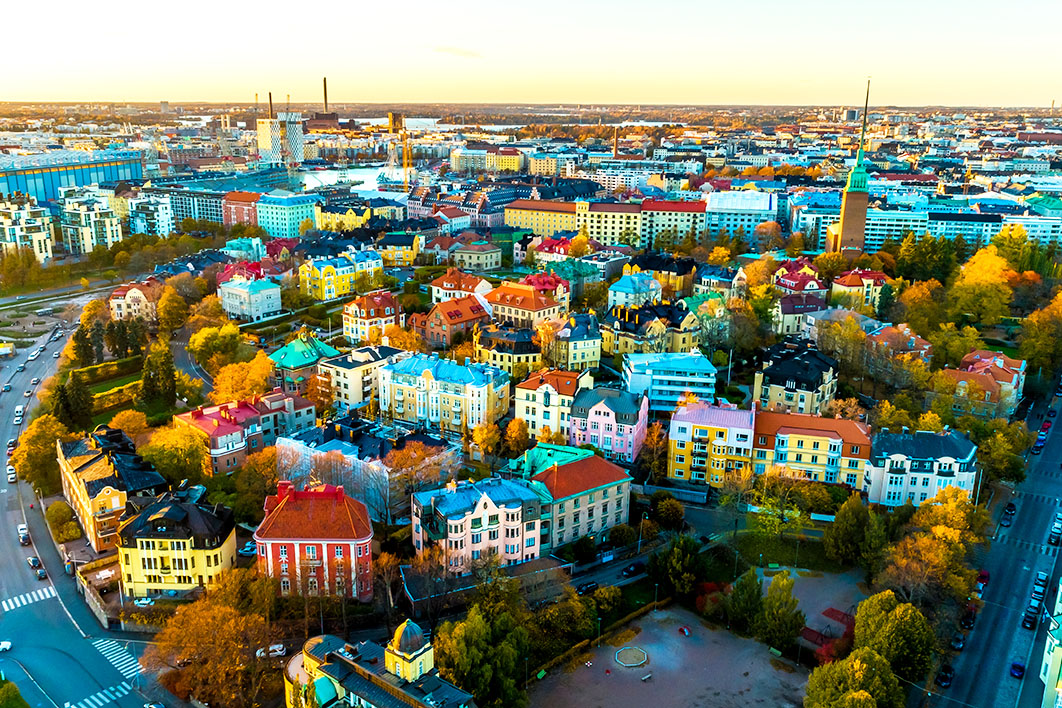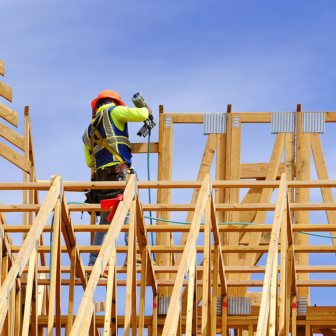As the Covid-19 pandemic set in, state and territory governments around Australia rapidly found crisis accommodation — usually in hotels — for around 7000 people who were sleeping rough. But the impressive speed and resolve raised a difficult question: what happens next?
A return to business as usual would mean sending these people back onto the streets to fend for themselves. Providing permanent housing, and ending their homelessness for good, would clearly be a better response.
We know from Finland that homelessness can be eliminated, or at least reduced to “functional zero” — that is, with homelessness as a “rare, short-lived and non-recurrent” phenomenon. Yet Finland remains the exception. It’s not the only country to make serious, well-resourced efforts to eliminate homelessness, but it stands alone in getting close to that goal.
In an illuminating new book, Ending Homelessness?, researchers Mike Allen, Lars Benjaminsen, Eoin O’Sullivan and Nicholas Pleace contrast Finland with two other European countries of comparable size — Ireland and Denmark — to investigate why broadly similar approaches to homelessness over more than a decade have produced very different results: considerable success in Finland, marginal progress in Denmark and failure in Ireland.
All three countries aimed to achieve functional zero by adopted the “housing first” ethos. The core idea is just what the name implies: when people are homeless, you first provide them with housing, without any preconditions attached. Only when they are secure in their home do you offer support for tackling other challenges: improving mental and physical health, reducing drug and alcohol use, finding a job or getting an education.
Finland’s policy succinctly encapsulates the approach: “Solving social and health problems is not a prerequisite for arranging housing, but instead housing is a prerequisite that will also enable solving a homeless person’s other problems.”
Housing first challenges the entrenched “preparation first” or “staircase” model, which helps people overcome addiction, illness and other challenges, while living in temporary shelters or transitional accommodation. The aim is to help them to become “housing ready” — that is, capable of independently maintaining a tenancy in the public housing system or the private rental market.
The staircase approach has no doubt assisted many individuals to regain control over their lives, but it hasn’t reduced homelessness overall. Why? According to the authors of Ending Homelessness?, it individualises the problem and fails to address systemic causes. “Despite a broad academic consensus that structural factors were driving the increase in the number of people experiencing homelessness,” the authors write, “services largely responded to homelessness as a set of personal inadequacies and deficiencies that required addressing and resolving before any attempt would be made to house them.”
Housing first is usually traced back to pioneering work by Sam Tsemberis in New York in the early 1990s, but as Allen, Benjaminsen, O’Sullivan and Pleace explain, Finland’s housing first approach is largely homegrown. What is more, housing first in Finland is a “system” rather than a “program,” “strategy” or “tactic.” In other words, it doesn’t just represent, as in the United States, the determined efforts of a charity to create housing for a specific cohort of people experiencing homelessness and other compounding problems but is backed by “the dedication and commitment of the state.”
With both central and local governments on board, Finland has not only adopted the commonsense philosophy “that all effective responses to homelessness must start with the offer of an affordable home.” It has also tackled the fundamental question that this approach inevitably throws up: “where are the homes to come from?”
This contrasts sharply with the experience in Australia, where leading not-for-profit housing providers have embraced housing first over the past decade, often under the name Common Ground. While sometimes winning backing from state governments, housing first approaches here tend to follow the American rather than the Finnish model — that is, of non-government organisations creating safe but isolated islands of affordable, supported, long-term housing within a landscape of housing insecurity and homelessness.
It’s true that governments back individual projects here and there, routinely paying lip service to the lack of affordable housing, but they rarely move beyond ineffectual responses like first-homeowner grants and stamp duty concessions. That seems likely to continue for as long as Australia lacks a coherent and appropriately resourced national housing strategy linking all three levels of government.
Commendable as they are, the states and territories’ rapid responses to rough sleeping in the pandemic underline this point. People living on the streets only came into sharp policy focus when they began to pose a health risk to the broader community; as long as they bore all the risks of homelessness themselves, government attention was inconsistent and sporadic.
Nor is booking someone experiencing homelessness into a hotel room a novel initiative. It is really an extension of the practice, pre–Covid-19, of routinely putting people up for a few days in cheap motels, backpacker hostels, caravan parks, overnight refuges or rooming houses. This led to exactly the same question that we face now — what happens next? The answer, by and large, was nothing: just an ongoing state of profound insecurity. The few Common Ground dwellings built by NGOs were already full and public housing waiting lists stretched off into the far distant future.
In A Crisis in Crisis, a report released last year, specialist homelessness services in Melbourne’s north and west gave a blunt account of how that shelter mentality plays out in practice. They reported spending $2.5 million in 2017 to put 9000 households into temporary accommodation. That meant paying up to $160 per night for low-grade motel rooms, often with inadequate bedclothes, broken locks and filthy toilets.
Given the high demand and long waiting lists for any kind of social housing, only a small percentage of those distressed households were subsequently assisted to find a secure home. Most remained trapped in a cycle of homelessness, from which a cheap motel room was at best a temporary respite; at worst it was another empty kick-in-the-guts promise. Housing workers were placed in an ethical bind, knowing their best efforts to help potentially made matters worse:
We are contributing to people’s experience of trauma and adding to their feelings of hopelessness… [We] can no longer tacitly accept causing harm by accepting high-cost poor-quality emergency accommodation as a necessary evil for those people who come to us for assistance because they do not have a home.
Some of the hotels booked for the pandemic response are of a higher standard than the down-at-heel motels or boarding houses that usually make up crisis accommodation, and rooms have been secured for a longer period. Yet even with crisp linen, fluffy towels and a deferred checkout, a four-star hotel is not a home.
The shelter mentality of “three hots and a cot” might be driven by the best of intentions: let’s make sure that everyone has good food and a warm bed to sleep in tonight and that no one is left out on the streets. Yet as a response to housing insecurity it is expensive and ineffective, because people end up stuck in services designed for emergencies. A shelter mentality often compounds the very problems it sets out to solve.
The Finnish version of housing first has shifted the focus from the “right to shelter” to the “right to a decent home,” and almost all emergency and transitional accommodation has been converted into permanent dwellings. While this may sound like a costly strategy, and undoubtedly requires significant upfront investment, it’s cheaper in the long run. Research in Finland shows an average saving of €15,000 (A$25,000) per person per year when someone moves from temporary accommodation into a settled home, including reduced costs for the health and justice systems. If secure housing enables people to re-enter the workforce, the savings over time are potentially greater.
Denmark and Finland are very different from Australia. One-in-five Danish dwellings and one-in-eight Finnish dwellings are in the public housing system; in Australia it is about one in twenty-five. Denmark and Finland also have more extensive welfare systems. As a consequence, people are unlikely to be driven into homelessness simply by poverty or excessive housing costs. People experiencing homelessness are likely to be individuals rather than families, and they are likely to suffer from a set of confounding problems. In Denmark, for example, almost four out of five people counted as homeless live with either a mental illness or substance abuse problems, and about a third have both.
Although about one in ten Irish dwellings are public housing, in other respects that country bears more of a resemblance to Australia. It has a less comprehensive welfare system than the Nordic countries, where “most people are not ‘just three pay cheques away’ from homelessness,” according to Allen, Benjaminsen, O’Sullivan and Pleace. Rather than building a new supply of dedicated public housing, Ireland has resorted to providing rent assistance to support tenancies in the private market, just as Australia has. The flaws in this approach are well known: when the market is tight, governments are unlikely to lift benefits at the same rate that property owners raise rents; it does nothing to increase the supply of affordable housing; and it doesn’t improve security of tenure, though termination of private tenancies is a major contributor to homelessness.
Some encouraging signs suggest that what happens next in Australia could be different this time. In Victoria, for example, a $150 million government package extends emergency hotel accommodation until at least April, ensuring that 2000 people who were homeless before the pandemic will not be cast out on the streets in the coming months. What’s more, the state government will lease 1100 properties in the private rental market to enable people to move from hotels to permanent homes.
If people moving from hotels to houses are also offered flexible, ongoing support to rebuild their lives, then this initiative fits well with the housing first philosophy. But when this scheme is limited to people who were already on the streets, then it risks being overwhelmed by a new deluge of housing insecurity created by the economic downturn. Mortgage pauses, eviction moratoriums and income support payments like JobKeeper and the JobSeeker supplement are helping people to keep a roof over their heads in the short run, but unless these measures are maintained, spiralling unemployment is likely to push many more people into homelessness.
One of the urgent lessons from Ending Homelessness? is the importance of helping people to stay in their homes through a personal or societal crisis. The reason is simple: preventing homelessness is cheaper and more effective than dealing with the fallout from evictions and defaults. In Finland, this is known as “housing social work” and also incorporates dedicated measures to ensure that people leaving prisons, hospitals and other institutions shift immediately into permanent homes.
A lack of prevention work also helps to explain why Ireland’s efforts to tackle homelessness failed. The Way Home, Ireland’s revised strategy to address homelessness, was laid out in late 2008 and early 2009, with the ambition of ensuring that by the end of 2010 no one would stay in emergency accommodation for more than six months. Between the plan’s implementation and the target date, the world was hit by the global financial crisis. As households struggled to meet rent or mortgage payments, homelessness increased sharply, including among families. Denmark and Finland were also hit hard by the GFC, but their more extensive welfare systems helped households to ride out the downturn without being pushed from their homes.
Annual spending on homelessness in Ireland more than doubled between 2008 and 2018, and the country spent more on services than either Denmark or Finland in this period. Yet despite strategic plans that emphasised a housing first approach, Ireland’s efforts had less effect because practices quickly reverted to the default provision of emergency support. Instead of expanding the supply of new permanent housing, the extra spending went on securing short-term places in shelters, hostels and private bed and breakfasts.
In 2011, under pressure from international institutions to rein in budget deficits, Ireland also cut its existing investment in public housing, with long-term consequences for the supply of affordable dwellings.
Denmark fared better than Ireland, but still fell short. One explanation was a lack of coordination between housing and welfare policy. While pursuing the goal of reducing homelessness, Denmark simultaneously cut the benefits paid to young people, partly as a cost-saving measure, partly to “motivate” them to pursue jobs and education. Either way, it seems to have contributed to a spike in youth homelessness that overwhelmed its housing first efforts.
Despite its extensive public housing system, Denmark also failed to create a designated stream of new dwellings to accommodate those experiencing acute homelessness. As a result, people identified as needing immediate housing could still find themselves subject to considerable waiting times.
There are many paths into homelessness but only one way out. Domestic abuse, relationship break-up, poverty, unemployment, illness, injury, addiction, eviction — any one or more of these things might force an individual or a family out of their home. But the only route out of homelessness is secure, affordable, decent housing.
It is this simple premise that makes the housing first approach so compelling. But that doesn’t make it easy. Finland has succeeded by setting clear goals and revisiting and refining its approaches over time. It has invested heavily in achieving the targets it set and created a separate stream of dedicated housing for people with the most complex needs instead of feeding them into the existing social housing system. It has benefited from continuity in both policy and personnel, with committed individuals in the government and not-for-profit sectors staying the course over the long term. This has helped it weather criticism from right-wing politicians and tabloid media, which disparaged the policy as “bottle first,” rewarding drunks and drug addicts for antisocial behaviour.
The Finnish model can’t be transplanted directly into an Australian context, but it points the way forward. Substantial progress in reducing homelessness here must involve a long-term commitment to increasing the supply of affordable dwellings, and a coordinated approach linking different levels of government that is not contingent on electoral outcomes for its longevity. Without that, housing first approaches are just not viable. Political champions committed to the long haul would help too — ministers, backbenchers, public servants, non-government leaders and other public figures.
The federal government has a unique opportunity to begin reshaping Australia’s housing landscape in the October budget, by committing to a large-scale investment in social housing as part of a Covid-19 stimulus package.
As Mission Australia CEO James Toomey put it recently in a blog post, to have housing first, we need houses… first. •




